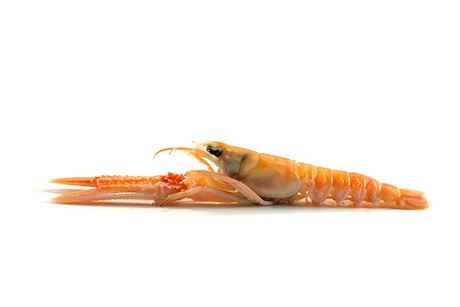Norway lobster
Discover the true flavor of our fresh langoustines from Denmark. Carefully selected and freshly supplied, these delicate shellfish offer a tender, sweet taste and refined texture that are perfect for impressive dishes. Whether you’re preparing a luxurious appetizer or a refined main course, our fresh langoustines bring the authenticity and quality of the North Sea directly to your kitchen. With their exquisite flavor and optimal freshness, these langoustines are ideal for both professional chefs and home cooks who want to serve the best. Order now and enjoy the pure, natural taste of the Nordic waters. Fresh and ready to enhance your dishes!
THE TUNA, DECONSTRUCTED
The tuna is impressive not only in size but also in its diversity of flavors. Each part of the fish offers its own culinary value – from the soft, marbled belly cuts to the bold, firm organs. Whether you're looking for sashimi-grade pieces or unique cuts for hot preparations, you'll find it all here.
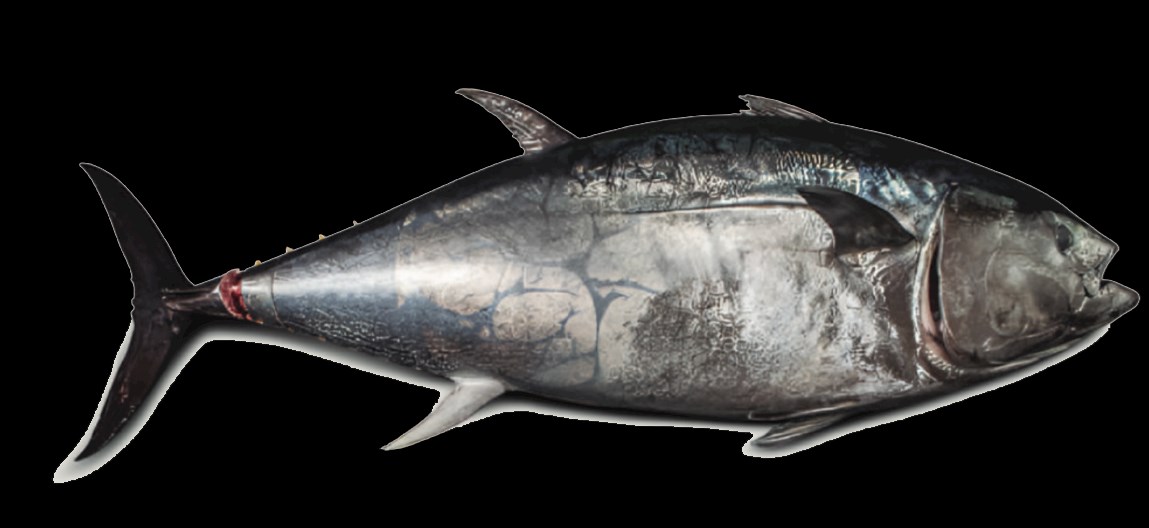
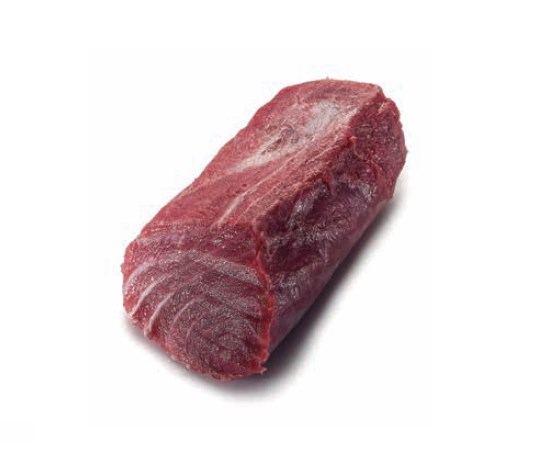
HEAD MEAT
It has the unique characteristic of having a fat percentage similar to that of ventresca, although its meat is firmer. It offers many cooking options. It's ideal for pairing with acids (which reduce the high fat content), with cooked dishes such as passion fruit cream, or with traditional dishes such as pickles. Due to its high fat content, it works very well grilled and barbecued. Grilled, it would go perfectly with red peppers, truffled potato cream, or pan-fried pate . It is recommended to cook it 100% or well done .

HEAD MEAT
It has the unique characteristic of having a fat percentage similar to that of ventresca, although its meat is firmer. It offers many cooking options. It's ideal for pairing with acids (which reduce the high fat content), with cooked dishes such as passion fruit cream, or with traditional dishes such as pickles. Due to its high fat content, it works very well grilled and barbecued. Grilled, it would go perfectly with red peppers, truffled potato cream, or pan-fried pate . It is recommended to cook it 100% or well done .

CHEEK
It's the inner part of the tuna's face. Because it's quite fibrous, it's perfect when grilled at a low temperature to ensure it's tender. It's delicious grilled, but we can also coat it with flour first and then stew or braise it.

CHEEK
It's the inner part of the tuna's face. Because it's quite fibrous, it's perfect when grilled at a low temperature to ensure it's tender. It's delicious grilled, but we can also coat it with flour first and then stew or braise it.
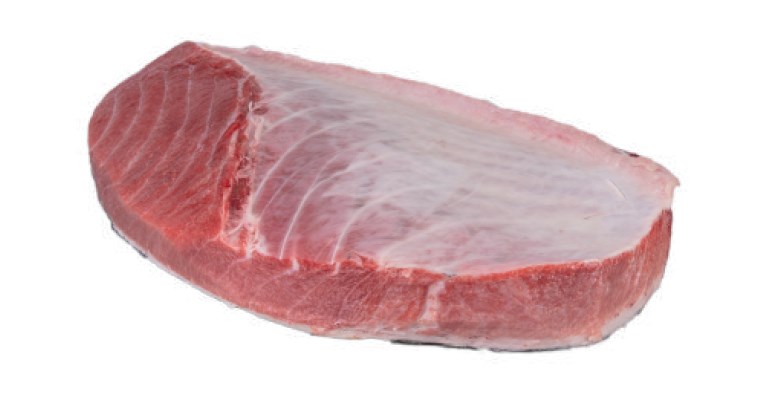
BELLY - TORO
The ventresca, also known as sorra, ijada or ootoro (in Japanese, it means "superior mellowness" ), is located in the ventral part of the tuna.
The ultimate expression of sushi and sashimi, it is the cut most prized by chefs and the icon of authentic bluefin tuna, distinguishing it from other species of lesser culinary value . Being the cut with the highest content of unsaturated fats (omega 3), it is also the pinkest and most tender cut of tuna. These two qualities make it ideal for preparations raw, but also grilled, pan-seared, and pickled, among many others.

BELLY - TORO
The ventresca, also known as sorra, ijada or ootoro (in Japanese, it means "superior mellowness" ), is located in the ventral part of the tuna.
The ultimate expression of sushi and sashimi, it is the cut most prized by chefs and the icon of authentic bluefin tuna, distinguishing it from other species of lesser culinary value . Being the cut with the highest content of unsaturated fats (omega 3), it is also the pinkest and most tender cut of tuna. These two qualities make it ideal for preparations raw, but also grilled, pan-seared, and pickled, among many others.
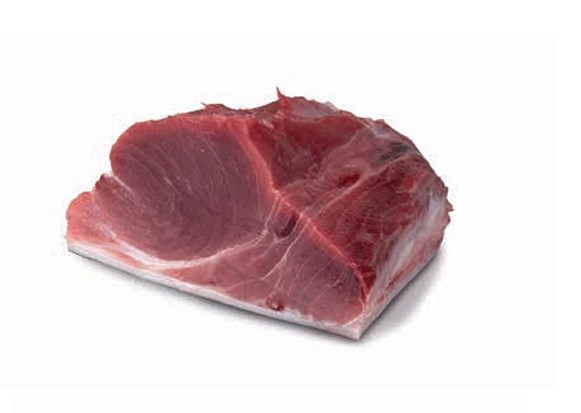
TIP OF LOIN
This cut from the end of the loin, often overlooked, surprises the culinary world with its versatility in the kitchen. The tip of the loin can be a great help both in finishing a tartar and in making it the star of a dish with onions. It's perfect for making hamburgers or meatballs , whether grilled or braised .

TIP OF LOIN
This cut from the end of the loin, often overlooked, surprises the culinary world with its versatility in the kitchen. The tip of the loin can be a great help both in finishing a tartar and in making it the star of a dish with onions. It's perfect for making hamburgers or meatballs , whether grilled or braised .
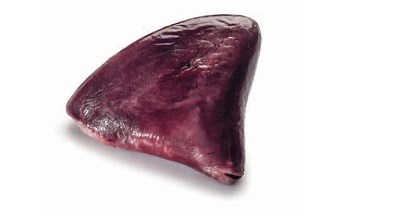
HEART
A trendy product within the new gastronomy. It requires long cooking times. Its intense flavor is a reward for the senses. It can be prepared salt-cured, stewed, or casseroled.

HEART
A trendy product within the new gastronomy. It requires long cooking times. Its intense flavor is a reward for the senses. It can be prepared salt-cured, stewed, or casseroled.
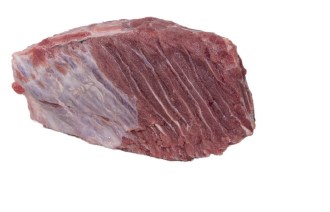
HARMONICA
It's called "harmonica" because its meat is marbled, with a feather appearing approximately every half centimeter, spanning the entire piece horizontally and vertically. It can be eaten either on the bone, which would be the most traditional way, or in a terrine. To debone it, it's essential to cook the piece thoroughly: 15 to 25 minutes in an aromatic broth (with pepper, bay leaves, onion, etc.) at about 65 degrees, until the bone comes loose easily. Next, we compact it in a terrine to obtain rectangles to which we apply different cooking techniques. The flavor of the "harmonica" is very surprising, as it has a very meaty flavor reminiscent of veal.

HARMONICA
It's called "harmonica" because its meat is marbled, with a feather appearing approximately every half centimeter, spanning the entire piece horizontally and vertically. It can be eaten either on the bone, which would be the most traditional way, or in a terrine. To debone it, it's essential to cook the piece thoroughly: 15 to 25 minutes in an aromatic broth (with pepper, bay leaves, onion, etc.) at about 65 degrees, until the bone comes loose easily. Next, we compact it in a terrine to obtain rectangles to which we apply different cooking techniques. The flavor of the "harmonica" is very surprising, as it has a very meaty flavor reminiscent of veal.
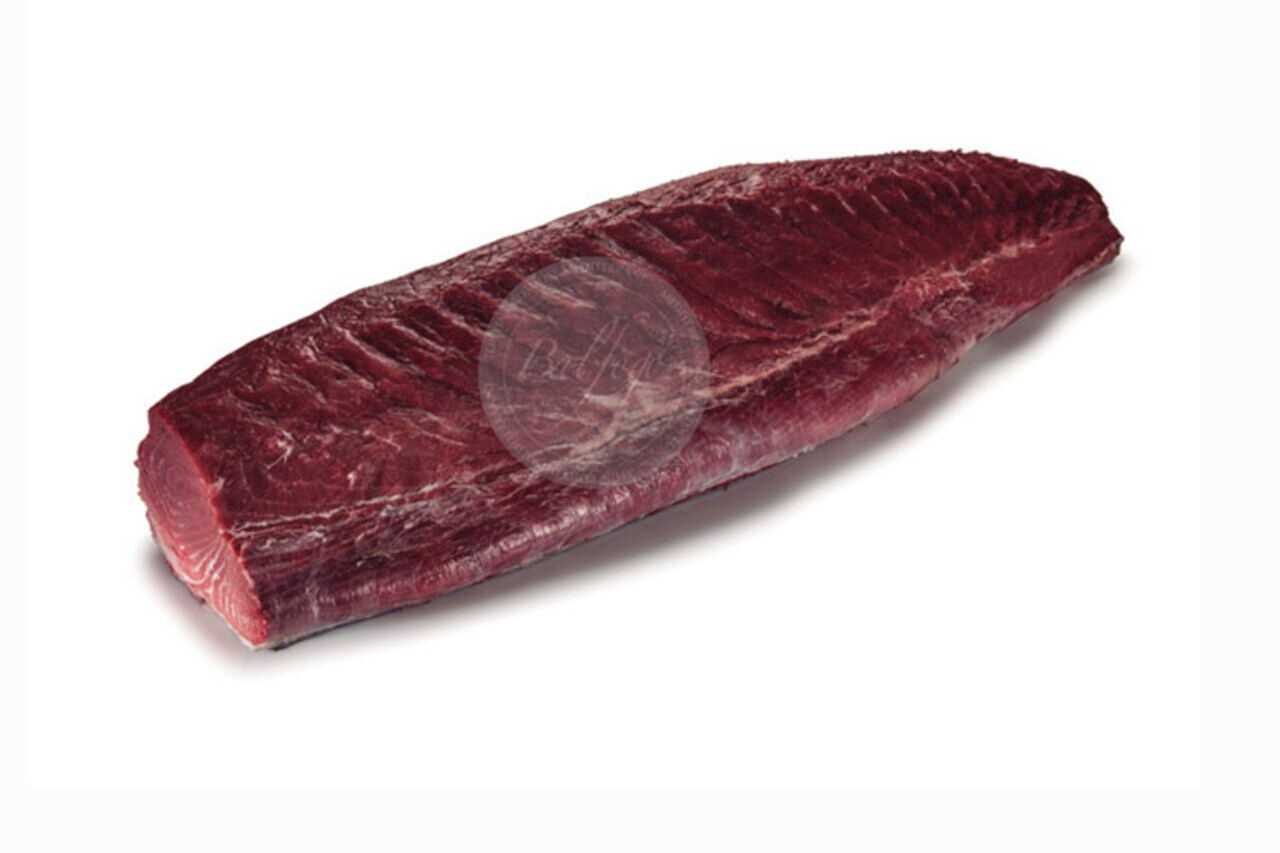
LOIN
Akami , which means "red meat" in Japanese, refers to the inner part of the loin, next to the spine. Its main characteristics are its red color and intense flavor. Chutoro means "intermediately tender," as it has a fat content between akami ( lean) and belly (fat). The outer part of the loin, very close to the skin, is characterized by its pink color and smoothness. The combination of akami and chutoro is the hallmark of authentic bluefin tuna ( hon maguro ), prized by sushi makers around the world. This duality of colors and textures offers chefs endless culinary possibilities.

LOIN
Akami , which means "red meat" in Japanese, refers to the inner part of the loin, next to the spine. Its main characteristics are its red color and intense flavor. Chutoro means "intermediately tender," as it has a fat content between akami ( lean) and belly (fat). The outer part of the loin, very close to the skin, is characterized by its pink color and smoothness. The combination of akami and chutoro is the hallmark of authentic bluefin tuna ( hon maguro ), prized by sushi makers around the world. This duality of colors and textures offers chefs endless culinary possibilities.
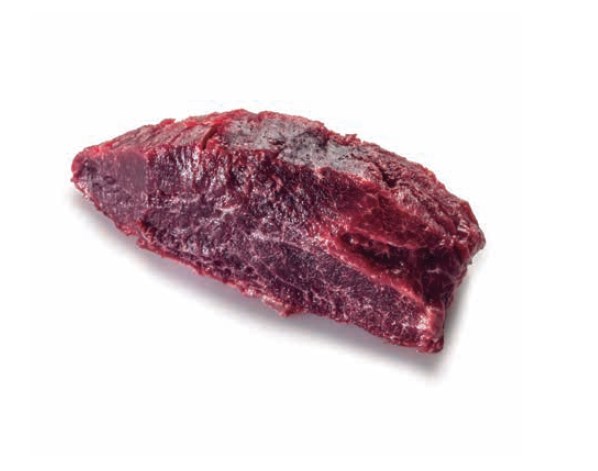
SECRETO
Located in the inner part of the tuna, the "secreto" (or paladar) is a piece that can be eaten both raw and cooked. Its flavor is intense and usually pairs well with sweet and sour or spicy dishes. Raw, it can be used in nigiri or as carpaccio , always sliced very thinly. When hot, it's ideal for grilling or stewing.

SECRETO
Located in the inner part of the tuna, the "secreto" (or paladar) is a piece that can be eaten both raw and cooked. Its flavor is intense and usually pairs well with sweet and sour or spicy dishes. Raw, it can be used in nigiri or as carpaccio , always sliced very thinly. When hot, it's ideal for grilling or stewing.
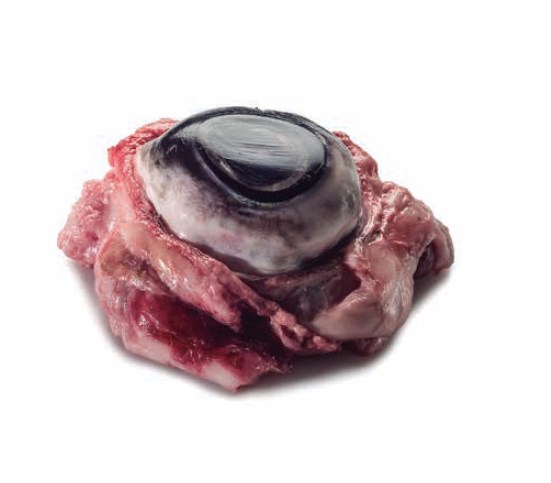
EYE
Although it's still a new ingredient here, Asians have long used it in their cooking. In the Western world, advancement and development in the culinary field are increasingly seeking out new ingredients. In the eye , for example, the muscle and connective tissue surrounding it is used for its high collagen and protein content.

EYE
Although it's still a new ingredient here, Asians have long used it in their cooking. In the Western world, advancement and development in the culinary field are increasingly seeking out new ingredients. In the eye , for example, the muscle and connective tissue surrounding it is used for its high collagen and protein content.
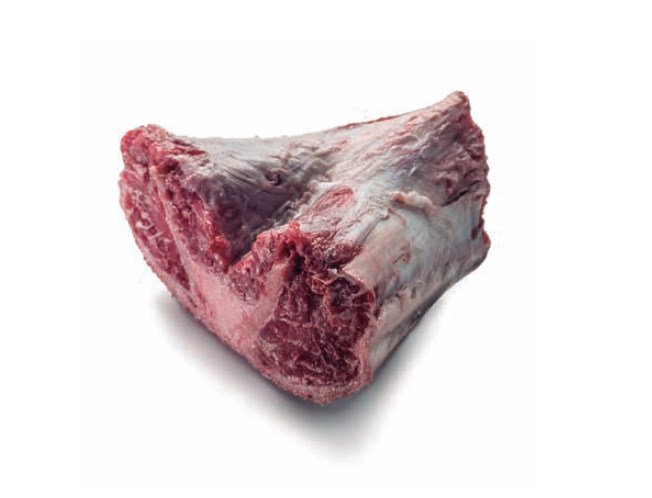
CHIN
In the case of tuna, it's a bone that , in addition to gelatin, offers a large amount of meat. It's ideal for baking, grilling, stewing, braising, or candied, since when cooked using these techniques, the fibers and cartilage become mellow. It can also be served in rice dishes, shredded or whole. It pairs well with deep flavors, with flavors of the sea and mountains, in the case of stews.

CHIN
In the case of tuna, it's a bone that , in addition to gelatin, offers a large amount of meat. It's ideal for baking, grilling, stewing, braising, or candied, since when cooked using these techniques, the fibers and cartilage become mellow. It can also be served in rice dishes, shredded or whole. It pairs well with deep flavors, with flavors of the sea and mountains, in the case of stews.
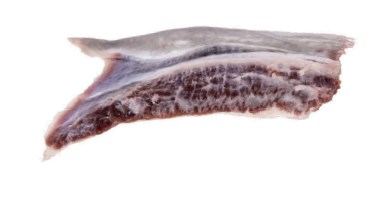
EAR
A part of pork that has been discarded in the Spanish market until now and which, due to its location, composition, size, and texture, is very similar to the more gelatinous parts of pork. It is a very fine ingredient, with a delicate sea flavor, that can be prepared boiled, stuffed, grilled, or as carpaccio . This part is located in the operculum. It is between 20 and 25 centimeters long and consists of a fibrous part and a meaty part.

EAR
A part of pork that has been discarded in the Spanish market until now and which, due to its location, composition, size, and texture, is very similar to the more gelatinous parts of pork. It is a very fine ingredient, with a delicate sea flavor, that can be prepared boiled, stuffed, grilled, or as carpaccio . This part is located in the operculum. It is between 20 and 25 centimeters long and consists of a fibrous part and a meaty part.
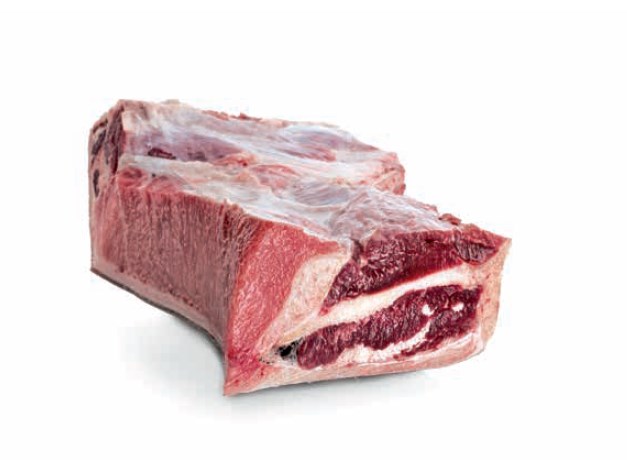
COLLAR BONE
It's known as entrecote de mar (sea entrecote) and is the bone on the sides of the neck that joins the head to the body of the animal. A portion of belly meat is added to the lean, deep red meat on the bone. It can be grilled, very toasted on the outside and very juicy on the inside. Along with ossobuco, parpatana has become a staple on the menus of the best steakhouses due to the results obtained when cooked on the grill or in a josper . It can also be boiled, shredded, and cooked in a terrine.

COLLAR BONE
It's known as entrecote de mar (sea entrecote) and is the bone on the sides of the neck that joins the head to the body of the animal. A portion of belly meat is added to the lean, deep red meat on the bone. It can be grilled, very toasted on the outside and very juicy on the inside. Along with ossobuco, parpatana has become a staple on the menus of the best steakhouses due to the results obtained when cooked on the grill or in a josper . It can also be boiled, shredded, and cooked in a terrine.
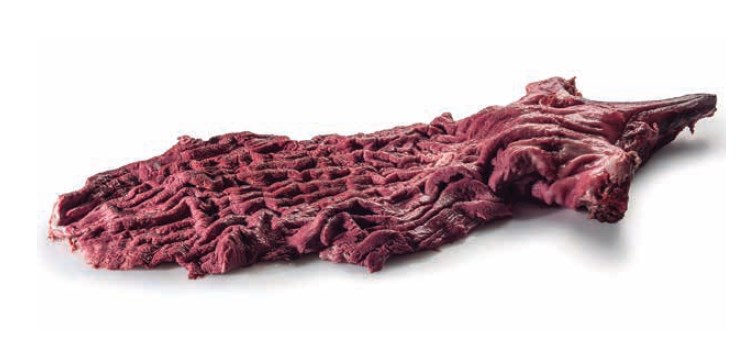
TRIPE
Considered the tripe of the sea. Its rough texture is the stomach of the tuna . It should be washed well and boiled until tender. It can be stewed with potatoes and a good picada, which may include pieces of the heart. This is a typical fish stew for winter days.

TRIPE
Considered the tripe of the sea. Its rough texture is the stomach of the tuna . It should be washed well and boiled until tender. It can be stewed with potatoes and a good picada, which may include pieces of the heart. This is a typical fish stew for winter days.
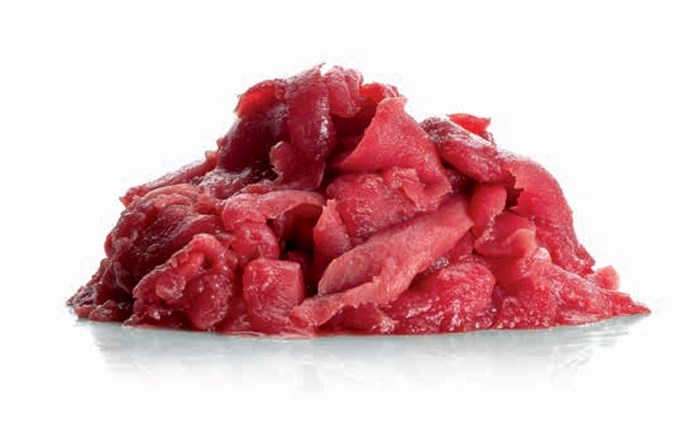
BONE MEAT
One of the typical sights of Tsukiji Market in Tokyo is the auctioneers eating nakaochi by the spoonful straight from the tuna. Due to its delicate nature and limited production, it's a product for immediate consumption. It's suitable as a dressing for salads, ceviches, and tiraditos, as well as for making hamburgers or meatballs.

BONE MEAT
One of the typical sights of Tsukiji Market in Tokyo is the auctioneers eating nakaochi by the spoonful straight from the tuna. Due to its delicate nature and limited production, it's a product for immediate consumption. It's suitable as a dressing for salads, ceviches, and tiraditos, as well as for making hamburgers or meatballs.
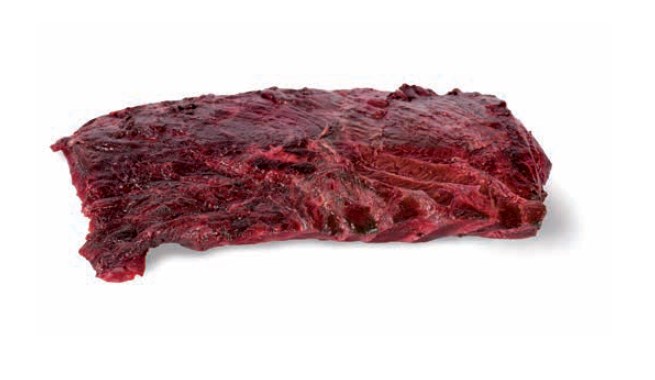
BLOODLINE
Part of the muscle closest to the spine. It has similar characteristics to the rest of the loin meat, although its texture is softer and its flavor is more potent . Its selenium content is the highest of all known foods. It also has antioxidant properties that help prevent certain diseases. It goes very well with tomato sauce, onion sauce, quince sauce, salted, or for making sausages. It can also be prepared pickled, marinated in acid, grilled, candied, barbecued, stewed, and casseroled.

BLOODLINE
Part of the muscle closest to the spine. It has similar characteristics to the rest of the loin meat, although its texture is softer and its flavor is more potent . Its selenium content is the highest of all known foods. It also has antioxidant properties that help prevent certain diseases. It goes very well with tomato sauce, onion sauce, quince sauce, salted, or for making sausages. It can also be prepared pickled, marinated in acid, grilled, candied, barbecued, stewed, and casseroled.
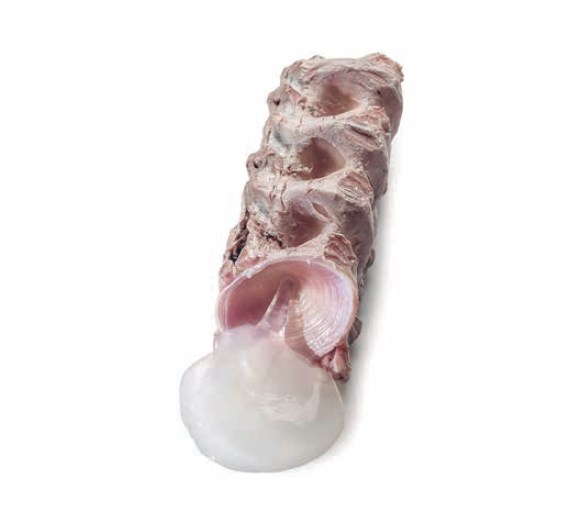
BONE MARROW
False marrow is the synovial fluid that facilitates the movement of the vertebral discs in tuna. It was used for the first time in 2003 at Ferran Adrià's El Bulli restaurant. It has a unique texture and a subtle flavor. It requires gentle cooking, at most poaching, battering, or frying. It is also ideal for eating raw or in tempura, or for making sauces.

BONE MARROW
False marrow is the synovial fluid that facilitates the movement of the vertebral discs in tuna. It was used for the first time in 2003 at Ferran Adrià's El Bulli restaurant. It has a unique texture and a subtle flavor. It requires gentle cooking, at most poaching, battering, or frying. It is also ideal for eating raw or in tempura, or for making sauces.

